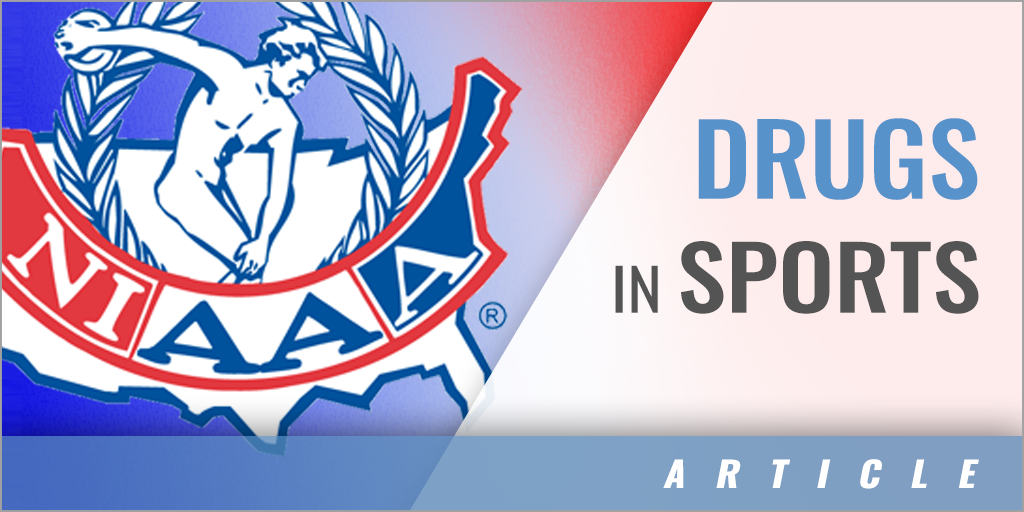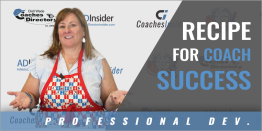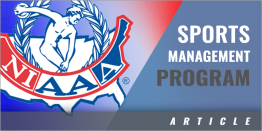|
By: Cole Kanyer, CMAA - Ellensburg, Washington Introduction On a cold February day in 2018, I was scratching my head in frustration and disbelief of the number of athletic code violations that had occurred at Ellensburg High School as a result of substance use or abuse. A clear low point of the job, investigating violations and communicating and imposing consequences for those suspected of violations is often a contentious experience. Parents often aren't on the same page with the administrator(s) responsible for assigning school or athletic discipline, and the "hamster wheel" feeling soon becomes frustrating in a short period of time. I knew that something needed to be done to help students make better decisions regarding the use and abuse of tobacco, alcohol, marijuana, and other drugs. Starting Point After working closely with our administrative team collecting and disaggregating the data of school and athletic discipline for use or possession of illegal substances, we uncovered a massive increase of violations from fall 2013 through 2018. After uncovering that data, we began to discuss why these violations were happening. Though we discussed many correlations, we never did arrive upon any conclusion on why tobacco, alcohol, marijuana, and other drugs were being used at such high numbers according to the violations that were uncovered. With this question remaining unanswered, we turned our focus to the educational aspects we could offer within our program. I knew that we had to try something we had never done in an effort to mold the values, attitudes, beliefs and opinions of our student-athletes. We agreed that we needed a proactive effort to educate our students and urge them to delay choosing to use any of those illicit substances. Once I had approval from our building principal, I moved full steam ahead to address this massive concern. Process My first call was to my mentor and former health education professor, Ken Briggs. In addition to being a distinguished, Hall of Fame professor at Central Washington University, he is a great friend and a master teacher. His engaging methods and energetic approach were a perfect fit to begin the conversation about presenting to several hundred hormonal adolescents. Additionally, Dr. Briggs had taught a course at CWU for 25 years titled "Drugs in Sports." This course was required of every Wildcat student-athlete and served as a massive foundation for the education we were about to deliver to EHS student-athletes. The challenge was how to trim down a 3-month course at CWU into a 2-hour seminar for EHS. Dr. Briggs and I began some local research through discussions with multiple students at EHS to get a pulse of the student body, in terms of substance use and abuse. We interviewed random students, in addition to students who were previously found in violation of the code, to discover what they felt the biggest substance abuse issues were facing them and their peers. Furthermore, we attempted to uncover the overarching question of, "WHY?" Again, though we received some outstanding feedback, it didn't lead to a firm answer to the simple question. However, we did uncover some themes from the students with whom we met. Though the data had already suggested some clear themes, our students identified tobacco use through vaping, and smokeless tobacco options, in addition to marijuana use, as a clear main-focus issue. Some others were quick to identify alcohol use and the misuse of prescription drugs, but most agreed on the themes of tobacco and marijuana. When our student panel was asked why, the main reason that was pointed out was because students "didn't think it was a big deal." As a follow up, we wanted to dig deeper into the relaxed attitude toward these illegal substances. Most pointed to family use; others pointed to the people with whom students surrounded themselves. It was at this point we knew a "just say no" campaign wouldn't work. After meeting with the students, and developing a direction for the seminar, our athletic department went on a communication frenzy. We sent individual letters home to every family in grades 8-11, recorded a video to send out via social media, and sent emails to every student's school email account to start the conversation. Additionally, all coaches, school district administration and staff at EHS were informed. These methods all contained background data, program philosophy, and dates, times, and locations for the future offering. We were pleasantly surprised with the feedback from those who received this information. There was a positive response from community members and from those in neighboring communities as well. It was a nice motivator that our community felt we were doing something valuable for our kids beyond their athletic experience. Once stakeholders were notified, Dr. Briggs and I met on two other occasions to trim down the presentation and focus on points specific to the needs of our students. At the end of those meetings, we had our foundation and the material for our first seminar. Our underlying message would be to "Live life above the line" and "Delay, Delay, Delay." We didn't feel that scare tactics and a "Just say no" approach was a good plan to create student buy-in and keep them engaged in this educational opportunity. If they could delay having to make the choice during their time as a student at EHS, they would be able to make a more educated decision later in life, when their values, attitudes, beliefs and opinions were truly their own. The Seminar The requirements for athletic eligibility were simple. Attend one seminar per school year. Fall sport athletes obviously needed to attend in the fall, where an athlete who started in winter and spring could attend any session prior to the sport's season. Our first date was the Wednesday after all fall sports had begun. Coaches were asked to finish their evening practices with enough time for students to grab dinner and return for the seminar. Nervously awaiting students' arrivals, we had an auditorium set up, the microphone was hot, the projector was working, and by 6pm we had approximately 300 EHS students in attendance. Students signed in upon arrival and the next two hours flew by with laughing, gasping, cringing, giving thumbs up or down, and demonstrating brain function. I was beyond impressed with our student-athletes being such great listeners and participants. Students came up for discussion afterward and many were surprised to see how substance use and abuse can affect performance, both athletically and academically. Also, many were blown away by seeing directly how use of these substances can permanently affect brain chemistry. At the end of that evening, I was thrilled about what we had started. There were so many positives, but still some lingering challenges moving forward. One challenge was offering makeups for students who were unable to attend. Aligning schedules for students, Dr. Briggs, and I proved difficult. Furthermore, students who signed up late or missed the first makeup, needed to be provided an option for eligibility still. Another challenge was scheduling facilities to suit the group. The first seminar had enormous attendance. In fact, so many winter and spring athletes showed up to the fall seminar, we only had about 40 students in attendance for the winter seminar, which required a change in location to a smaller auditorium. However, the winter seminar was far more interactive, with questions and answers happening multiple times throughout the presentation. Conclusion Substance use and abuse will continue to affect schools in our state, and we will continually be facing challenges of how this affects athletic eligibility. However, working through these challenges and providing educational opportunities for students is well worth it. So far, alcohol violations at EHS have reduced by 100%, marijuana violations by 40%, and tobacco violations by 40%. This could be merely coincidental, or hopefully, showing evidence that further educating our students has had a positive impact on their decision making. Additionally, there is still a large portion of the school year to go, and these numbers will likely change moving forward. Regardless, interscholastic athletic participation has the ability to impact students positively for a lifetime. It is my hope that we can continue this positive impact across the cognitive, physical, social, emotional, and future vocational areas of our students' lives. |






